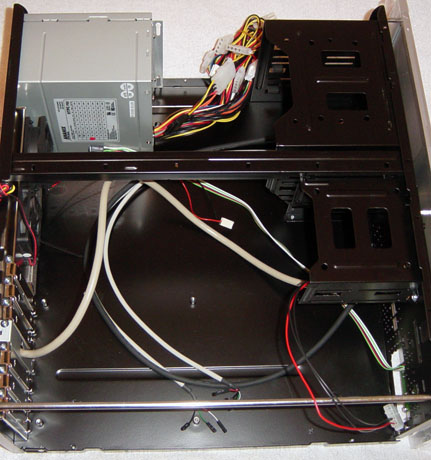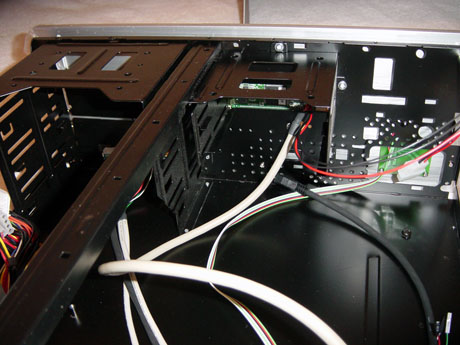A First Look at the HTPC Case Genre with the Ahanix D.Vine 4
by Purav Sanghani on October 10, 2004 1:00 PM EST- Posted in
- Cases/Cooling/PSUs
Internal Design
Comparing mid-tower cases to HTPC cases is like comparing apples to oranges, which is why we have started a fresh new board to compare the various HTPC cases out there. To understand better the layout of an HTPC case, we needed to first become familiar with the design of a single home theater component.We notice that each component in a home audio/video setup is a single unit, which is about 17" in width and can range in depth from 6"-17" depending on the component. This helps keep a consistent look when lining each unit up on a shelf and gives the entire display an organized look.
In order for this to be the case for an HTPC chassis, the motherboard and drive bays as well as the power supply would all need to be mounted both to utilize space efficiently as well as in a technologically feasible manner for that particular component.
Looking at the insides of the D.Vine 4, we see that the motherboard is, of course, laid to rest at the bottom of the case. The power supply would be mounted at the back right of the chassis, which is where it would normally be on a mid-tower case when standing upright.
The drive bays are all at the front of the chassis, but are limited to two to three 5-1/4" drive bays and two to three 3-1/2" drive bays, which are organized horizontally to utilize space efficiently as well as positioning components to operate to manufacturer specifications. Ahanix has implemented a three 5-1/4" bay design while limiting hard drive mounts to two bays. This should be ample in an HTPC setup, since they can be networked to, say, a media server or other PCs around the area, but the D.Vine 4 could have been expanded to four 3-1/2" bays to utilize the remaining space better.<












21 Comments
View All Comments
Zim - Sunday, October 10, 2004 - link
You don't need to spend $300 on a HTPC case. Just get yourself a nice desktop or mini-tower AT case for $100 or less. Personally I built my HTPC for about $400 using spare bits and pieces and some kit from NewEgg.